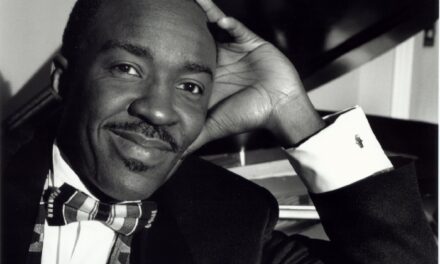V. K. Raman and Mysore Srikanth really need no introduction to the world of Indian classical music. At the outset, the two genteel-mannered gentlemen are brothers and hail from Southern India. Raman, a proficient flutist, composer, and teacher, is a disciple of Dr. N. Ramani, one of India’s most respected musicians. His brother Srikanth is a versatile violinist, composer, and teacher in his own right as well. Both come with impressive credentials in the world of South Indian classical music and have performed at many prestigious venues across the globe. They have composed and collaborated on a variety of musical projects and have released over forty CDs — a testimony to their multi-faceted talent and reach. Music has been in their life from childhood, and upon listening to their duet performance at West Cary Middle School in Cary (a program hosted by the Indian Classical Music and Dance Society – ICMDS), their mastery over the violin and flute seemed to flow passionately and melodiously from within. They were also accompanied by Vijay Ganesh, an exemplary “mridangist”— a South Indian percussionist.
The brothers practice, teach, compose and perform in the Carnatic music style – one of two classical styles of music that exists in India (the other being Hindustani). Carnatic music originated in and is specific to South India, and Hindustani originated in and is specific to Northern India. In South Indian classical music, the violin is played with the musician seated cross-legged on the floor, cradling the stringed instrument diagonally between the chin and the foot. In contrast, in the western classical world, the violin is held with the musician standing up. Carnatic music prides itself with possessing a vast array of raagas or melodies, each having among their parameters a set number of swaras or notes, within which the musician has to maintain and display his musical prowess. One cannot randomly stray from one raaga to the other: this would lead to incorrect delivery. There are seven swaras in South Indian classical music. These seven swaras are then arranged in myriad ways to arrive at many different raagas. Often, even one missing scale can change and differentiate one raaga from another. Unique to the system of South Indian classical music, are the gamakas or ornamentations for the underlying melodic patterns. These provide the life and soul to the existing song, without which the delivery of the song would be rendered somewhat plain, flat, or bland, as it were. The swaras or melodic scales particular to a given raaga or melody slide effortlessly by the musicians as they bring to life various lilting patterns in the song.
Raman’s and Srikanth’s program began with a gentle raaga “alapana” or melodic “explorations” on the violin and the flute sans rhythm, which set the stage for more elaborate numbers to follow. In no time, the two instrumentalists, in harmonious synchronization with the able percussionist, delved right into the heart of their presentation with complex time cycles, beats, and smooth interplay among themselves. Various interpretations within raagas followed, to the delight of audience members, held spell-bound by the musical virtuosity unfolding before them. In rapt attention, the audience showed complete involvement by tapping feet and keeping beat with their hands, in accordance to the music being played.
Some gems from the treasure-house of well-known compositions and composers in the Carnatic music repertoire were given center-stage, including timeless classics. South Indian raagas such as Nalinakanthi, Naattai, Swararanjani, Begada, Pantuvarali, Purvikalyani and Aabheri, to name a few, were rendered with many “kalpanaswaras” or “manodharma” or creative interpretations through various permutations and combinations of scales within them. The musicians’ hands seemed deftly to move across the flute and violin as they played some fast-paced sessions in fleeting succession, with the percussionist juxtaposing vibrant and intricate rhythmic flourishes.
“Neraval” is a fascinating feature in Carnatic music, wherein the musicians render a line from a composition over and over again but with newness and improvisation each time, while adhering to the structure of the scales in a given raaga. The duo accomplished this with a scintillating measure of dexterity. There was often a brilliant back and forth between the instruments and the percussionist as they played short sequences in quick succession, leading to much appreciative applause from the audience.
Playing uninterrupted for nearly two and a half hours, Raman and Srikanth took the audience through a divine musical journey of music and rhythm, lending new meaning to the term “virtuosity.” Raman often interchanged flutes from short ones to long ones, showcasing the different but subtle range of sounds that can emanate from flutes made of bamboo. Srikanth’s bowing techniques spoke volumes of his innate talents and experience, and together they were a force to reckon with. The mridangist or percussionist was also given center-stage for a brief interval in accordance with tradition, during the Ragam-Tanam-Pallavi – the piece de resistance in a Carnatic music concert. This is an elaborate rendition of a central song that can last thirty to forty minutes. The display of impromptu rhythmic patterns while maintaining a strict underlying time cycle was astounding and deserves special mention.
In all, it was a musical performance par excellence that had all the required elements in judicious proportions, giving a sense of completeness that only voluminous experience and sheer skill can lend itself to.











